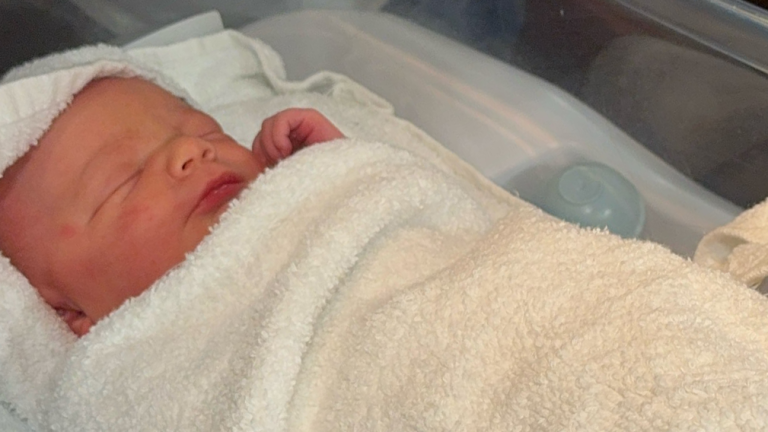Bathing your newborn can seem daunting at first, if not downright scary. Newborns are tiny, and the idea of stripping them out of their warm onesies and swaddle blankets and subjecting them to a wet – and potentially slippery – bath might alarm you.
Take a deep breath, arm yourself with these tips from Dr. Frederick Stine, DO, a Pediatrician practicing at St. Elizabeth Healthcare, and rest assured that both you and your baby will be fine.
1. Prepare Everything You Need
You don’t want to realize you forgot something once you’ve started giving your baby a bath because, unless someone else is with you, you can’t leave your baby to go get it. Grab towels, diapers, clothes and lotions ahead of time.
2. Use a Sponge or Washcloth
Until your baby’s umbilical cord falls off – usually by two weeks after birth – you really shouldn’t be bathing your baby at all. Instead, use a warm, damp cloth or sponge to wipe your baby, concentrating on the hands, neck and diaper area.
Once the cord falls off, your baby is ready for a tub bath, but remember that a tub bath for newborns means a baby bath, the kitchen sink or on a counter. “Be extra careful if using a sink, which can be slippery and have faucets and handles sticking out. Also, keep the faucet off while your baby is in the water,” advises Dr. Stine.
3. Bathe Your Baby Two to Three Times a Week
Your baby has a few more years before he or she is running around outside, collecting dirt and grass stains. At this stage, baths are mainly about cleaning milk, formula or spit-up out of easily concealed spots like the neck, cleaning the diaper area well, and making sure baby’s head is as sweet-smelling as ever.
During these baths, use soap sparingly. “Soaps can dry out your baby’s skin. If a cleanser is needed for heavily soiled areas, use only mild, neutral-pH soaps without additives,” says Dr. Stine. You might also risk removing oils on the skin he or she needs, causing irritation and dryness.
4. Don’t Make the Bath Too Hot
When it comes to water temperature, it’s better to make it too cold than too warm. Technically speaking, water temperature should be under 110 and 115 degrees Fahrenheit – anything above that could potentially cause a thermal injury – but a simple test you can do is to swirl your fingers in the water for 10 to 15 seconds to make sure the water isn’t too hot for your baby.
5. Don’t Leave Your Baby Unsupervised, Even for a Second
If your phone or doorbell rings, let it go. NEVER walk away from your baby when he or she is in the bath.
6. Wait for the Full-Sized Bathtub
Babies need to be able to hold themselves up and have some balance and control before they can sit in a full-sized bathtub. This is usually around the time he or she is between nine and 12 months old. If you don’t have a baby bath, try bathing your baby in the kitchen sink.
7. Empty the Bath Container Immediately After Use
Depending on the container you use, make sure you empty it after the bath. Any container full of water can pose a drowning danger to a baby just learning how to crawl or walk or can be dangerous to other children in the home.
8. Have Fun, but Ditch the Toys
“Bath time should be fun. Giving your child time to splash around in the tub is important. However, in the newborn phase, toys are unnecessary and can pose a danger,” reminds Dr. Stine.
Don’t let fear get in the way of enjoying bath time with your baby – it can be a great time for bonding. Newborns are small, but baths won’t hurt them if you follow these guidelines and be gentle. If you have questions regarding the care of your newborn, contact your child’s doctor or find a pediatrician at St. Elizabeth.

